An Alternative Process for Leaching Chalcopyrite Concentrate in Nitrate-Acid-Seawater Media with Oxidant Recovery
Abstract
1. Introduction
2. Materials and Methods
2.1. Chalcopyrite Concentrate and Reagents
2.2. Experimental Procedure
3. Results and Discussion
3.1. Series I. Leaching Test Results at Room Temperature
3.1.1. Variation of Redox Potential (ORP)
3.1.2. Effect of the Nitrate Concentration
3.1.3. Effect of Sulfuric Acid Concentration
3.2. Series II. The Effect of Temperature and Particle Size on the Leaching Rate
3.2.1. Characterization of the Residues
3.3. Flue Gas Scrubbing Tests
3.4. Proposed Process for Leaching Chalcopyrite and Recovering Oxidants
4. Conclusions
Author Contributions
Funding
Acknowledgments
Conflicts of Interest
References
- Li, Y.; Kawashima, N.; Li, J.; Chandra, A.; Gerson, A.R. A review of the structure, and fundamental mechanisms and kinetics of the leaching of chalcopyrite. Adv. Colloid Interface Sci. 2013, 197, 1–32. [Google Scholar] [CrossRef]
- Velásquez-Yévenes, L.; Nicol, M.; Miki, H. The dissolution of chalcopyrite in chloride solutions: Part 1. The effect of solution potential. Hydrometallurgy 2010, 103, 108–113. [Google Scholar] [CrossRef]
- Nicol, M.; Miki, H.; Velásquez-Yévenes, L. The dissolution of chalcopyrite in chloride solutions: Part 3. Mechanisms. Hydrometallurgy 2010, 103, 86–95. [Google Scholar] [CrossRef]
- Watling, H. Chalcopyrite hydrometallurgy at atmospheric pressure: 1. Review of acidic sulfate, sulfate–chloride and sulfate–nitrate process options. Hydrometallurgy 2013, 140, 163–180. [Google Scholar] [CrossRef]
- McDonald, R.; Muir, D. Pressure oxidation leaching of chalcopyrite. Part I. Comparison of high and low temperature reaction kinetics and products. Hydrometallurgy 2007, 86, 191–205. [Google Scholar] [CrossRef]
- Romero, R.; Mazuelos, A.; Palencia, I.; Carranza, F. Copper recovery from chalcopyrite concentrates by the BRISA process. Hydrometallurgy 2003, 70, 205–215. [Google Scholar] [CrossRef]
- Watling, H. Chalcopyrite hydrometallurgy at atmospheric pressure: 2. Review of acidic chloride process options. Hydrometallurgy 2014, 146, 96–110. [Google Scholar] [CrossRef]
- Gok, O.; Anderson, C.G. Dissolution of low-grade chalcopyrite concentrate in acidified nitrite electrolyte. Hydrometallurgy 2013, 134–135, 40–46. [Google Scholar] [CrossRef]
- Cisternas, L. Uso de Agua de mar en la mineria. Fundamentos y Aplicaciones; RIL Editores: Santiago, Chile, 2014. [Google Scholar]
- Torres, C.; Taboada, M.; Graber, T.; Herreros, O.; Ghorbani, Y.; Watling, H. The effect of seawater based media on copper dissolution from low-grade copper ore. Miner. Eng. 2015, 71, 139–145. [Google Scholar] [CrossRef]
- Hernández, P.C.; Taboada, M.E.; Herreros, O.O.; Graber, T.A.; Ghorbani, Y. Leaching of Chalcopyrite in Acidified Nitrate Using Seawater-Based Media. Minerals 2018, 8, 238. [Google Scholar] [CrossRef]
- Hernández, P.; Taboada, M.; Herreros, O.; Torres, C.; Ghorbani, Y. Chalcopyrite dissolution using seawater-based acidic media in the presence of oxidants. Hydrometallurgy 2015, 157, 325–332. [Google Scholar] [CrossRef]
- Velásquez-Yévenes, L.; Quezada-Reyes, V. Influence of seawater and discard brine on the dissolution of copper ore and copper concentrate. Hydrometallurgy 2018, 180, 88–95. [Google Scholar] [CrossRef]
- Hernández, P.C.; Dupont, J.; Herreros, O.O.; Jimenez, Y.P.; Torres, C.M. Accelerating copper leaching from sulfide ores in acid-nitrate-chloride media using agglomeration and curing as pretreatment. Minerals 2019, 9, 250. [Google Scholar] [CrossRef]
- Stetefeldt, G.A. Process of Treating Sulphides. U.S. Patent 287,737, 30 October 1883. [Google Scholar]
- Sokić, M.D.; Marković, B.; Živković, D. Kinetics of chalcopyrite leaching by sodium nitrate in sulphuric acid. Hydrometallurgy 2009, 95, 273–279. [Google Scholar] [CrossRef]
- Pacovic, N.V. Hydrometalurgy SRIF; Bor, Serbia, 1980; Chapter 3. [Google Scholar]
- Vračar, R.Ž.; Vučković, N.; Kamberović, Ž. Leaching of copper (I) sulphide by sulphuric acid solution with addition of sodium nitrate. Hydrometallurgy 2003, 70, 143–151. [Google Scholar] [CrossRef]
- Sokić, M.D.; Matković, V.L.; Marković, B.R.; Štrbac, N.D.; Živković, D.T. Passivation of chalcopyrite during the leaching with sulphuric acid solution in presence of sodium nitrate. Hem. Ind. 2010, 64, 343–350. [Google Scholar]
- Sokić, M.; Radosavljević, S.; Marković, B.; Matković, V.; Štrbac, N.; Kamberović, Ž.; Živković, D. Influence of chalcopyrite structure on their leaching by sodium nitrate in sulphuric acid. Metall. Mater. Eng. 2014, 20, 53–60. [Google Scholar] [CrossRef]
- Bredenhann, R.; Van Vuuren, C. The leaching behaviour of a nickel concentrate in an oxidative sulphuric acid solution. Miner. Eng. 1999, 12, 687–692. [Google Scholar] [CrossRef]
- Linnow, K.; Steiger, M.; Lemster, C.; De Clercq, H.; Jovanović, M. In situ Raman observation of the crystallization in NaNO3–Na2 SO4–H2O solution droplets. Environ. Earth Sci. 2013, 69, 1609–1620. [Google Scholar] [CrossRef]
- Rodriguez-Navarro, C.; Doehne, E.; Sebastian, E. How does sodium sulfate crystallize? Implications for the decay and testing of building materials. Cem. Concr. Res. 2000, 30, 1527–1534. [Google Scholar] [CrossRef]
- Suchak, N.; Joshi, J. Simulation and optimization of NOx absorption system in nitric acid manufacture. AIChE J. 1994, 40, 944–956. [Google Scholar] [CrossRef]
- Kameoka, Y.; Pigford, R.L. Absorption of nitrogen dioxide into water, sulfuric acid, sodium hydroxide, and alkaline sodium sulfite aqueous solutions. Ind. Eng. Chem. Fundam. 1977, 16, 163–169. [Google Scholar] [CrossRef]
- Aoki, M.; Tanaka, H.; Komiyama, H.; Inoue, H. Simultaneous absorption of NO and NO2 into alkaline solutions. J. Chem. Eng. Jpn. 1982, 15, 362–367. [Google Scholar] [CrossRef]
- Carta, G. Scrubbing of nitrogen oxides with nitric acid solutions. Chem. Eng. Commun. 1986, 42, 157–170. [Google Scholar] [CrossRef]
- Carta, G. Role of nitrous acid in the absorption of nitrogen oxides in alkaline solutions. Ind. Eng. Chem. Fundam. 1984, 23, 260–264. [Google Scholar] [CrossRef]
- Suchak, N.J.; Jethani, K.; Joshi, J.B. Absorption of nitrogen oxides in alkaline solutions: Selective manufacture of sodium nitrite. Ind. Eng. Chem. Res. 1990, 29, 1492–1502. [Google Scholar] [CrossRef]
- Xiao, Z.; Li, D.; Wang, F.; Sun, Z.; Lin, Z. Simultaneous Removal of NO and SO2 with A New Recycling Micro-nano Bubble Oxidation-absorption Process Based on HA-Na. Sep. Purif. Technol. 2020, 242, 116788. [Google Scholar] [CrossRef]
- Joshi, J.; Mahajani, V.; Juvekar, V. Invited review absorption of NOx gases. Chem. Eng. Commun. 1985, 33, 1–92. [Google Scholar] [CrossRef]
- Duncan, J.L.; McLarnon, C.R.; Alix, F.R. NOx, Hg, and SO2 Removal Using Ammonia. U.S. Patent 6,936,231, 30 August 2005. [Google Scholar]
- Hignett, T.P. Fertilizer Manual; Springer Science & Business Media: Berlin/Heidelberg, Germany, 2013; Volume 15. [Google Scholar]
- Janz, G.J.; Ward, A.T.; Reeves, R.D. Molten Salt Data. Electrical Conductance, Density, and Viscosity; DTIC Document: Los Angeles, CA, USA, 1964. [Google Scholar]
- Janz, G.; Tomkins, R. Molten Salts: Volume 5, Part 2. Additional Single and Multi-Component Salt Systems. Electrical Conductance, Density, Viscosity and Surface Tension Data. J. Phys. Chem. Ref. Data 1983, 12, 591–815. [Google Scholar] [CrossRef]
- Berg, R.W.; Kerridge, D.H.; Larsen, P.H. NaNO2+ NaNO3 phase diagram: New data from DSC and Raman spectroscopy. J. Chem. Eng. Data 2006, 51, 34–39. [Google Scholar] [CrossRef]
- Yáñez, H.S.A.; Soderstrom, M.; Bednarski, T. Nitration in copper SX? Cytec Acorga provides a new reagent. In Hydrocopper 2009; Gecamin Ltd.: Santiago, Chile, 2009. [Google Scholar]
- Zambra, R.Q.A.; Rivera, G.; Castro, O. Use of NR® reagents in presence of nitrate ion in SX: A revision of the present moment. In Hydroprocess 2013; Gecamin Ltd.: Santiago, Chile, 2013. [Google Scholar]
- Hamzah, B.; Jalaluddin, N.; Wahab, A.W.; Upe, A. Copper (II) extraction from nitric acid solution with 1-phenyl-3-methyl-4-benzoyl-5-pyrazolone as a cation carrier by liquid membrane emulsion. J. Chem. 2010, 7, 239–245. [Google Scholar] [CrossRef]
- Virnig, M.J.; Mattison, P.L.; Hein, H.C. Processes for the Recovery of Copper from Aqueous Solutions Containing Nitrate Ions. U.S. Patent 6,702,872, 22 July 2004. [Google Scholar]
- Yáñez, H.A.; Ardiles, L.; Reyes, F.; Joly, P.; Mejias, J. Washing Stages in the Control of Chloride Transfer from Leach Solutions to the Electrolyte in Copper Solvent Extraction Process. In Hydroprocess 2018; Gecamin Ltd.: Santiago, Chile, 2018. [Google Scholar]
- Yáñez, H.A.; Ardiles, L.; Del Río, C. High Chloride in PLS and their Impact on Copper Solvent Extraction. In Hydroprocess 2017; Gecamin Digital Publications: Santiago, Chile, 2017. [Google Scholar]
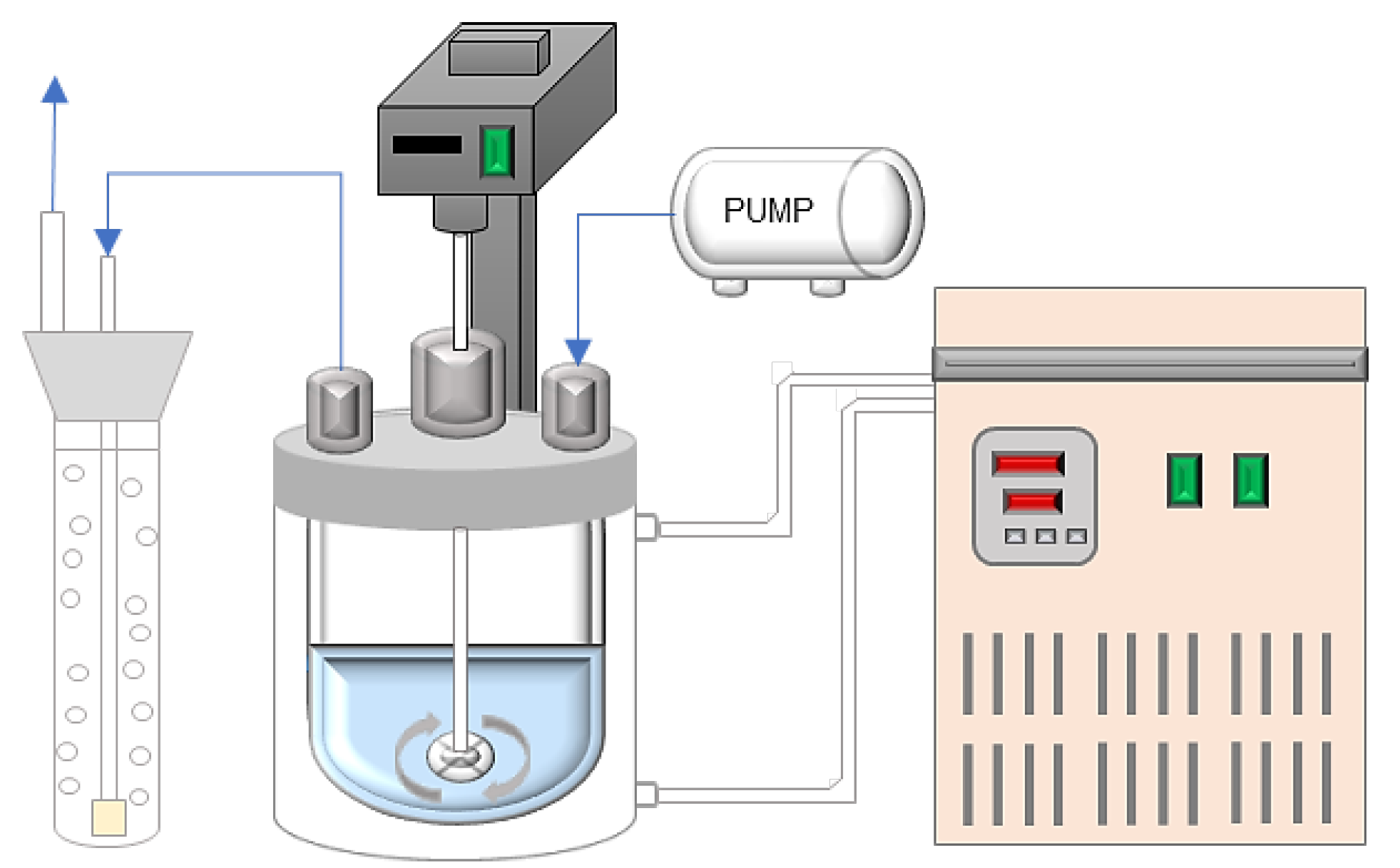
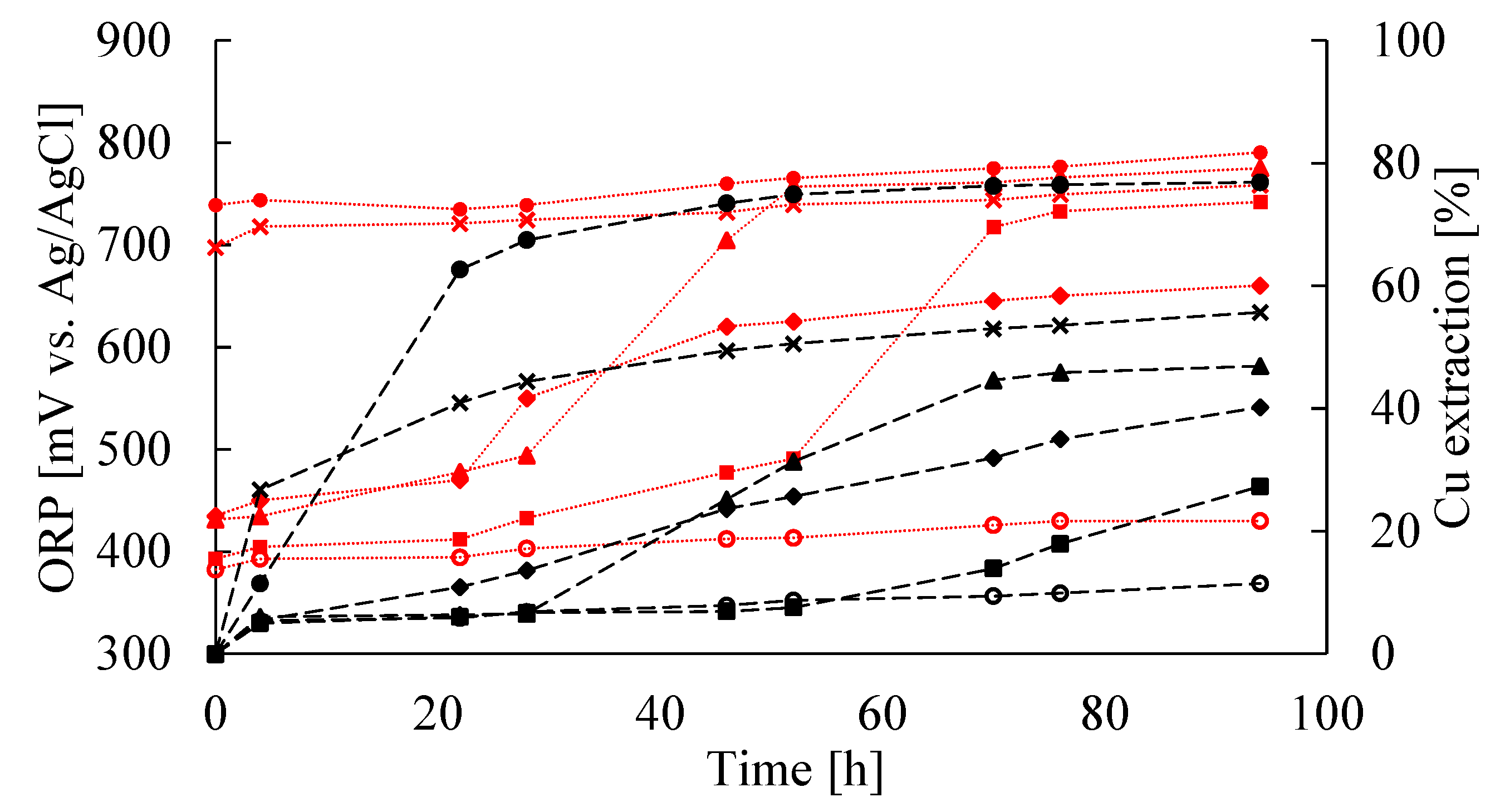
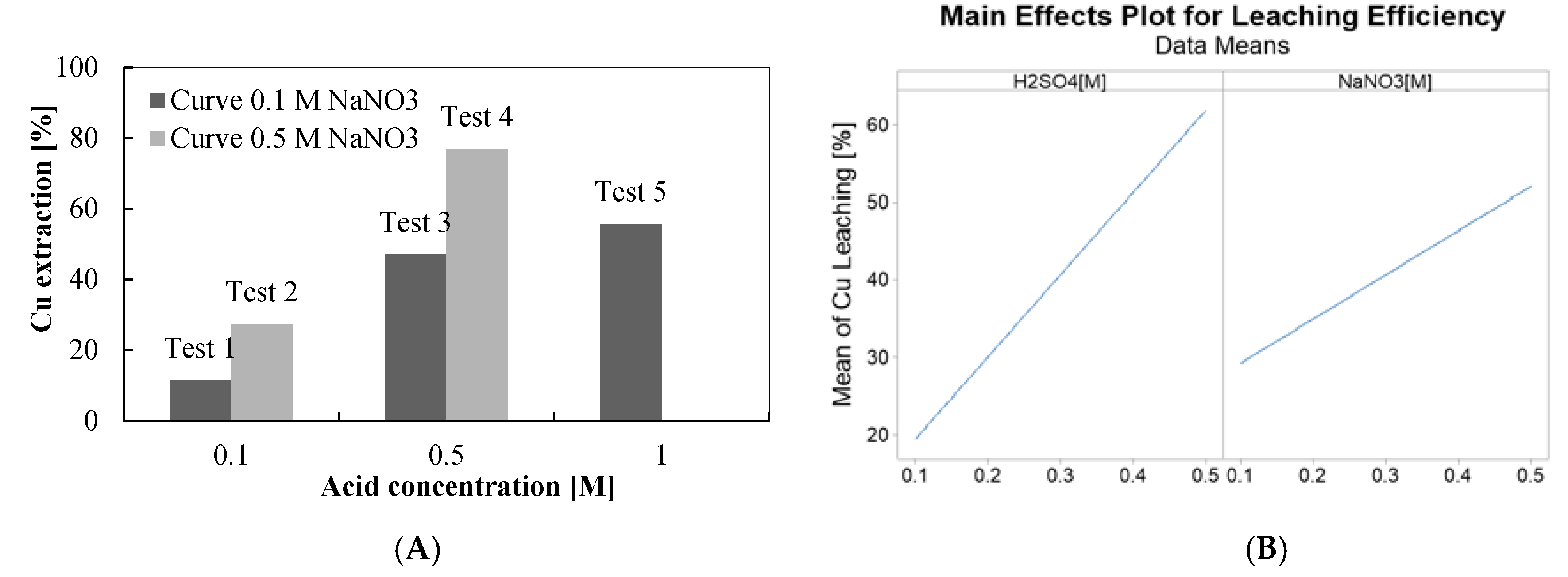
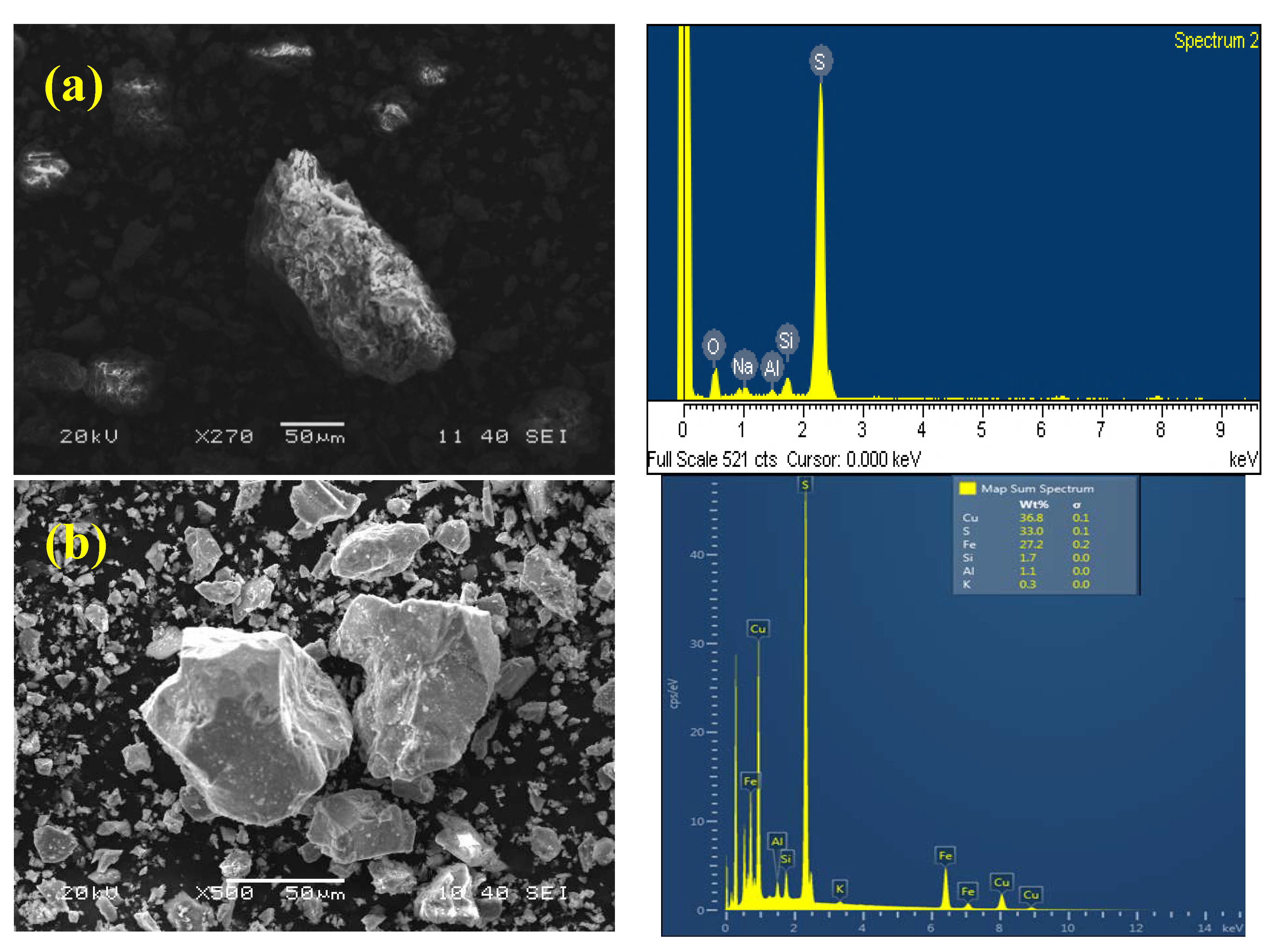
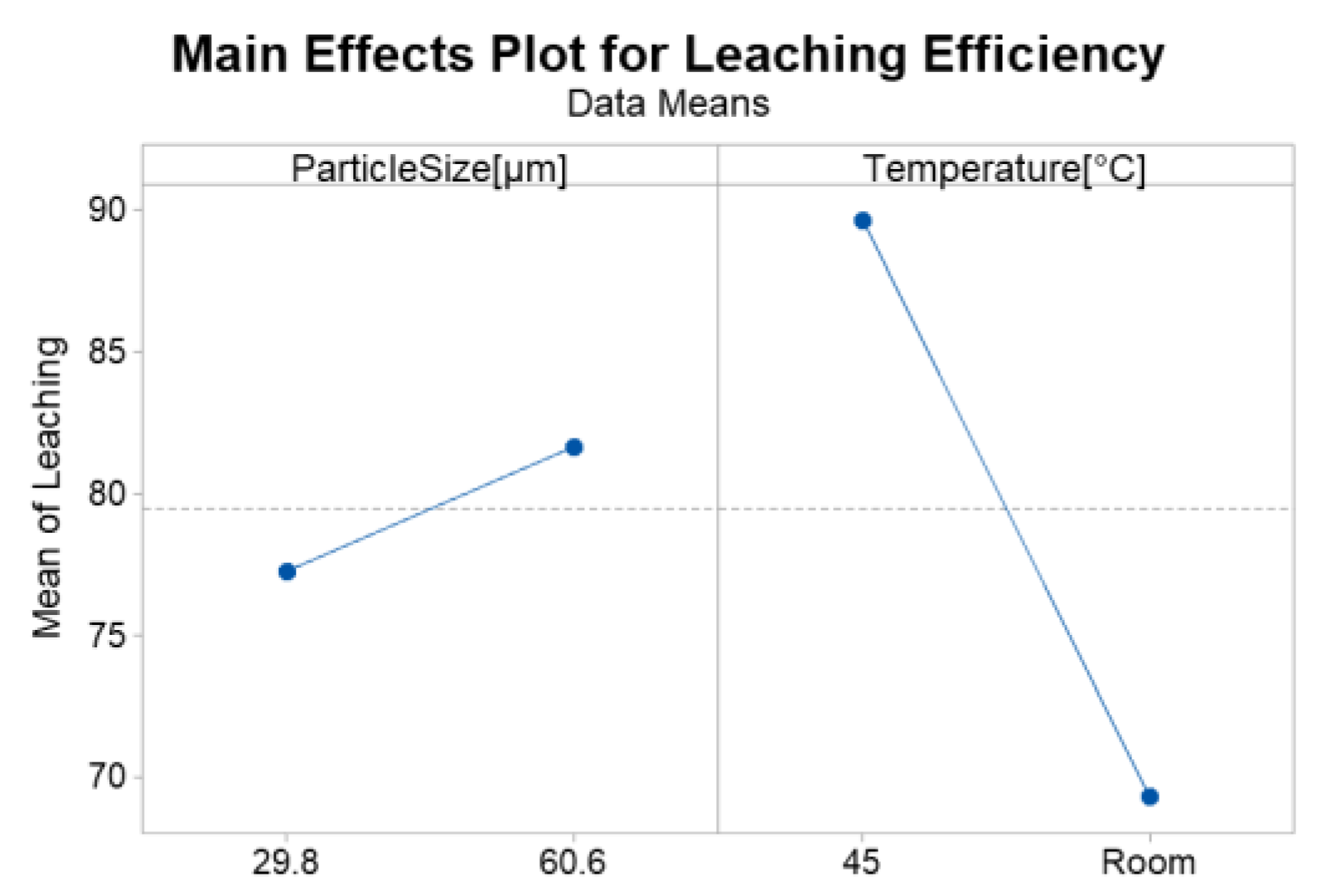
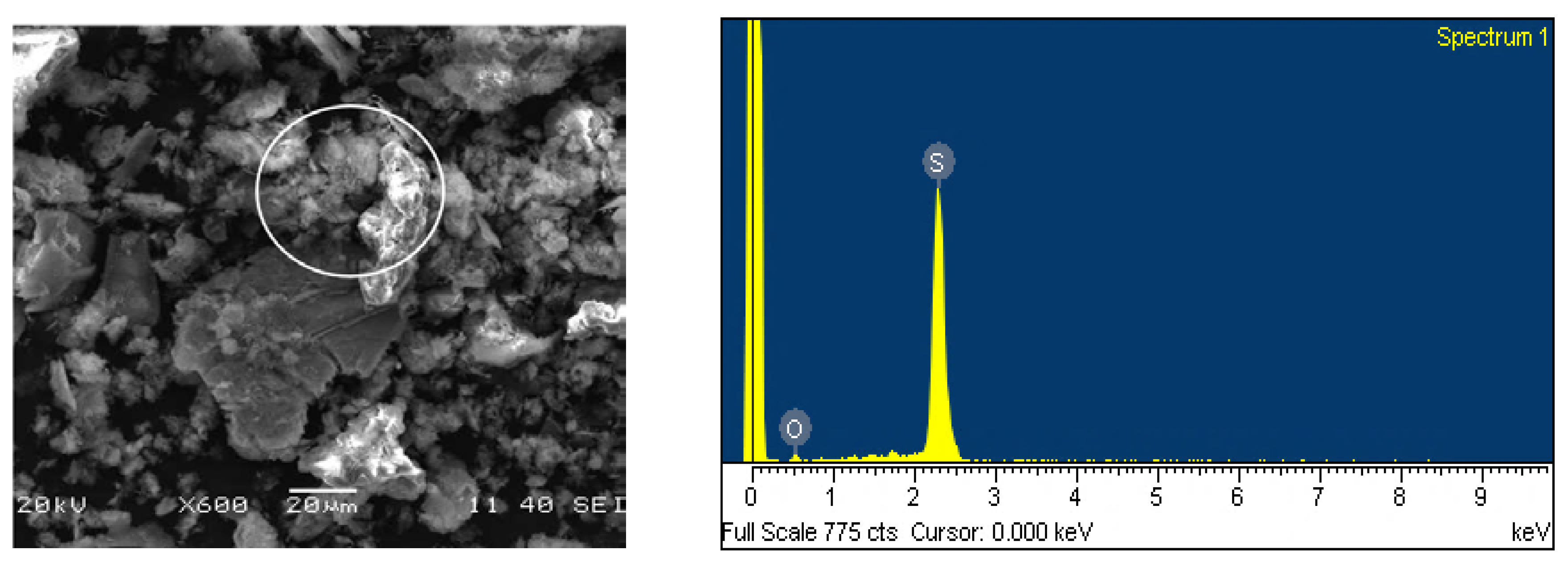
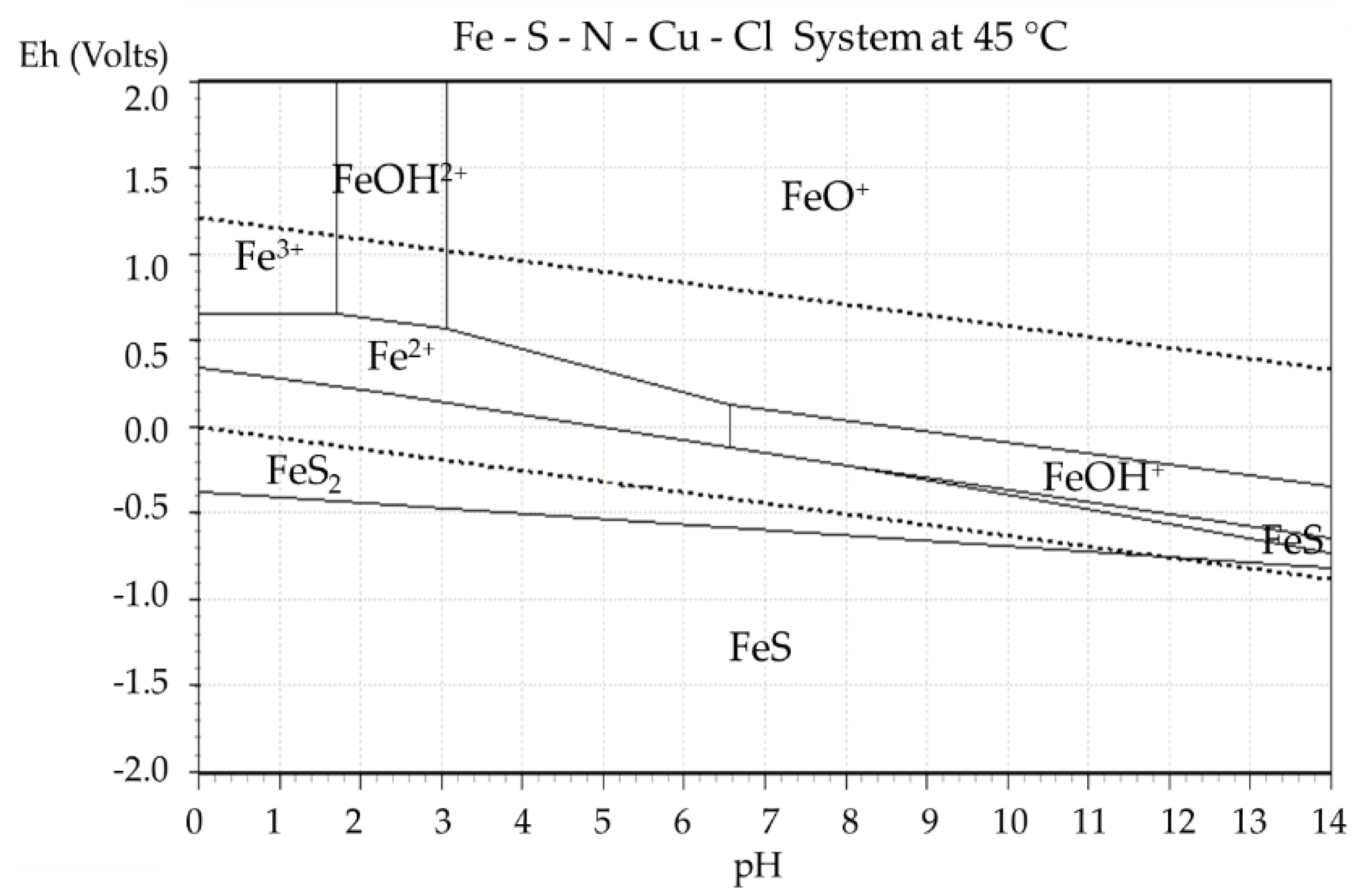

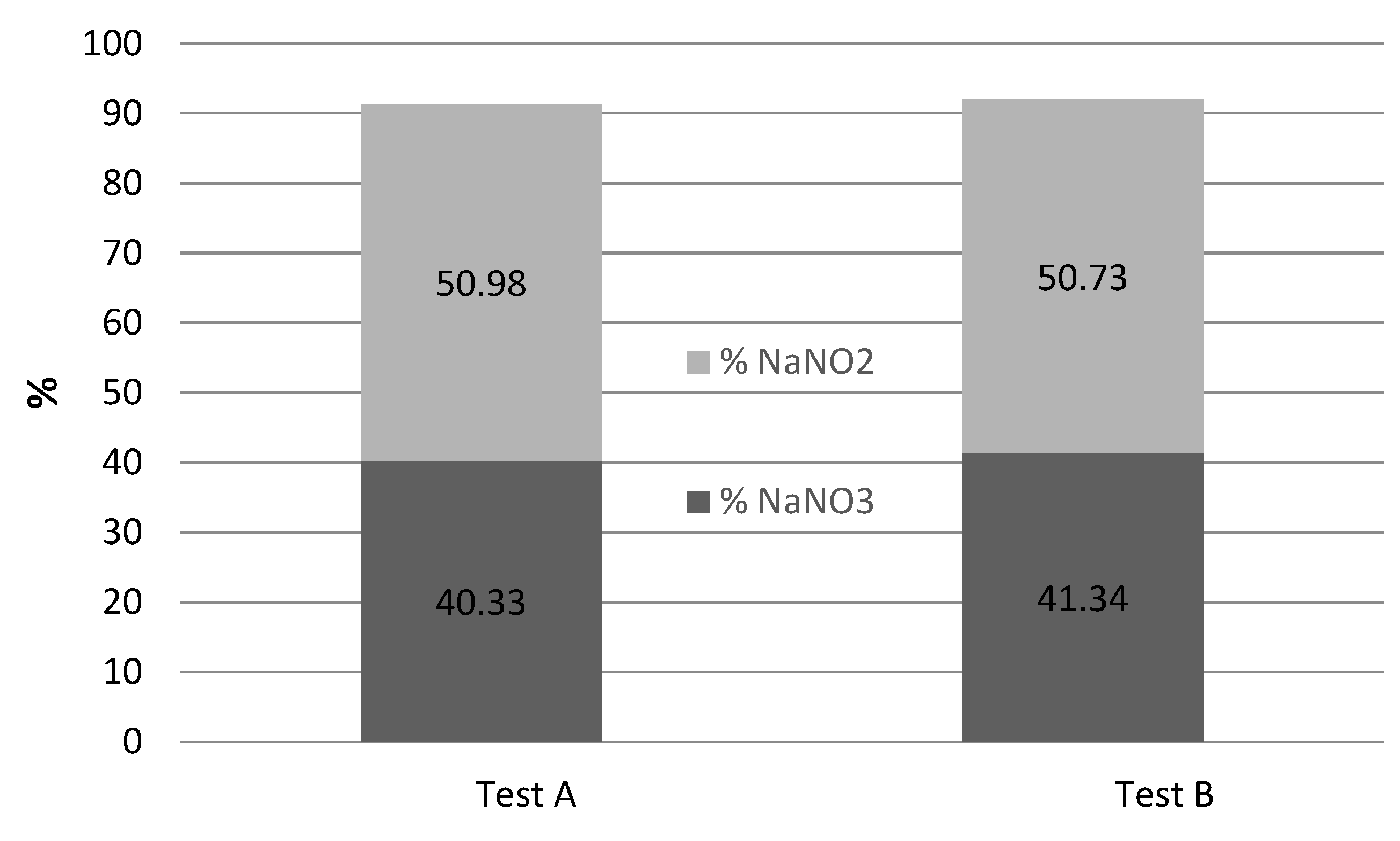

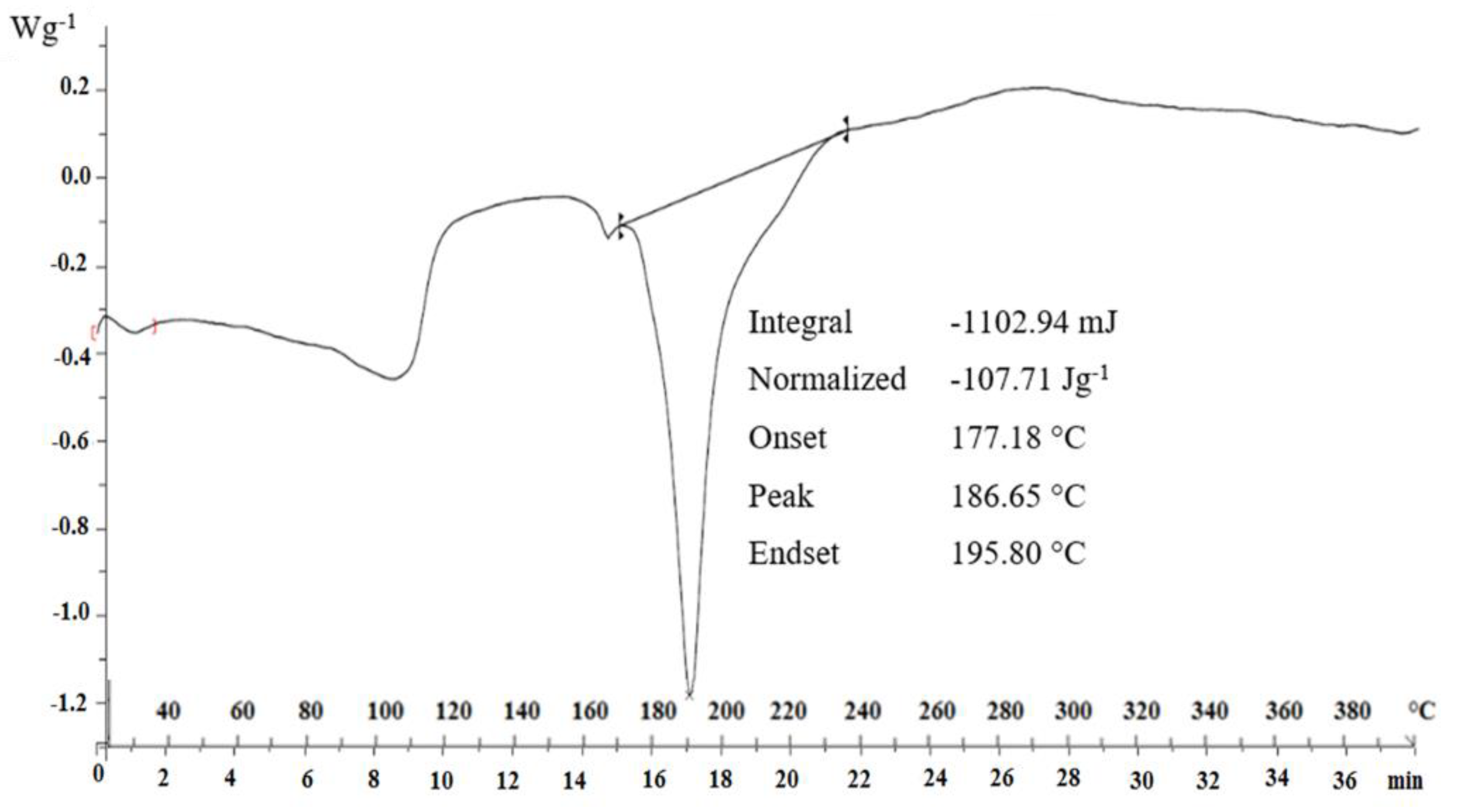
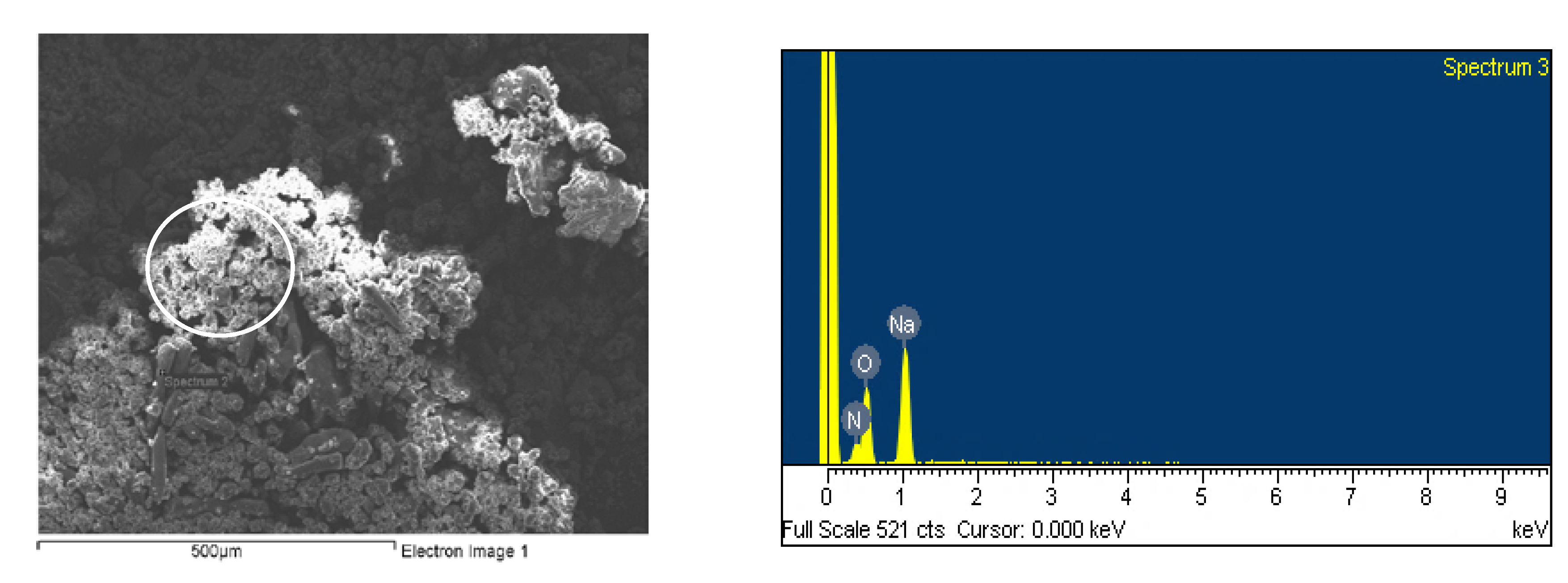
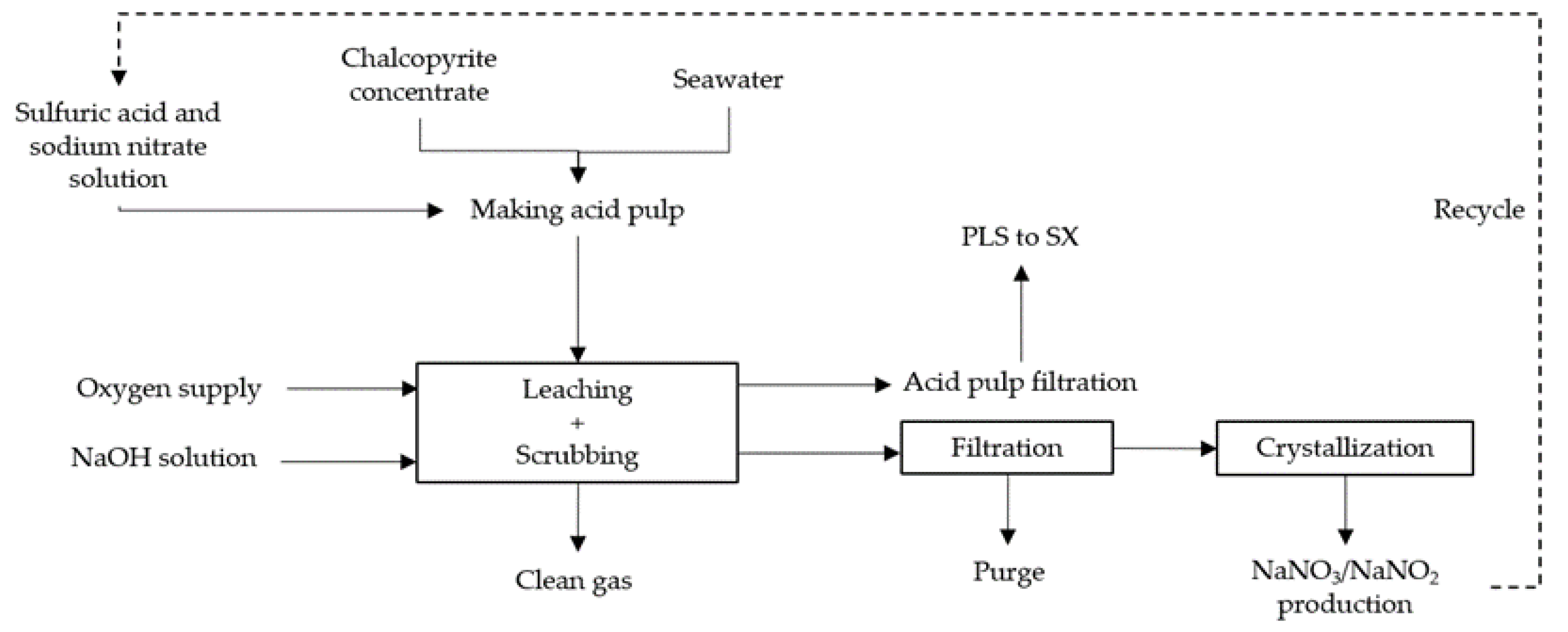
| Reaction N° | ΔG°298 K (kJ/mol) | ΔG°318 K (kJ/mol) |
|---|---|---|
| (2) | −349.1 | −361.4 |
| (3) | −66.0 | −66.6 |
| (4) | −62.9 | −63.8 |
| (5) | 8.7 | 14.1 |
| (6) | −16.7 | −23.5 |
| (7) | −363.2 | −369.3 |
| (8) | −346.5 | −345.8 |
| Reaction N° | ΔH°298 K (kJ/mol) | ΔG°298 K (kJ/mol) |
|---|---|---|
| (9) | −114.5 | −70.9 |
| (10) | −56.9 | −4.5 |
| (11) | −40.5 | 1.9 |
| (12) | −204.6 | −171.0 |
| (13) | −147.7 | −166.6 |
| (14) | −118.6 | −129.3 |
| Chemical Analysis | Mineralogical Analysis | |||
|---|---|---|---|---|
| Element | wt.% | Minerals | Formula | wt.% |
| Si | 2.3 | Quartz | SiO2 | 2.2 |
| Fe | 32.7 | Pyrite | FeS2 | 23.3 |
| Al | 1.0 | Chalcopyrite | CuFeS2 | 61.5 |
| Mg | 0.2 | Covellite | CuS | 1.5 |
| Ca | 0.3 | Molybdenite | MoS2 | 0.4 |
| Cu | 25.0 | Dolomite | CaMg(CO3)2 | 1.4 |
| Zn | 0.5 | Boehmite | AlOOH | 2.0 |
| Ti | 0.5 | Chalcanthite | CuSO4∙5H2O | 1.2 |
| Mo | 0.2 | Albite | NaAlSi3O8 | 2.2 |
| K | 0.4 | Muscovite | KAl2(Si3Al)O10(OH)2 | 1.9 |
| C | 0.2 | Biotite | K(Mg, Fe2+)3(Si3Al)O10(OH)2 | 0.7 |
| Na | 0.3 | Sphalerite | (Znx, Fe1−x)S | 0.6 |
| S | 36.3 | Gypsum | CaSO4∙2H2O | 0.8 |
| Clinochlore | (Mg, Fe2+)5Al(Si3Al)O10(OH)8 | 0.2 | ||
| Ion | Concentration [mg/L] | Method of Analysis |
|---|---|---|
| Na+ | 9950 | Atomic absorption spectrometry |
| Mg2+ | 1250 | Atomic absorption spectrometry |
| Ca2+ | 400 | Atomic absorption spectrometry |
| K+ | 380 | Atomic absorption spectrometry |
| Cl− | 19,450 | Argentometric method |
| 150 | Acid-base volumetry |
| Series | Test N° | Particle Size (µm) | Temperature (°C) | [H2SO4] (M) | [NaNO3] (M) | ORP Range (mV vs. Ag/AgCl) | Cu Ext. (wt.%) | Cu Ext. (wt.%) (Duplicate) | Cu Ext. (wt.%) Average |
|---|---|---|---|---|---|---|---|---|---|
| I | 1 | −60.66 | Room | 0.1 | 0.1 | 380–463 | 11.5 | 11.4 | 11.5 |
| 2 | −60.66 | Room | 0.1 | 0.5 | 390–760 | 27.6 | 27.0 | 27.3 | |
| 3 | −60.66 | Room | 0.5 | 0.1 | 410–793 | 46.1 | 47.7 | 46.9 | |
| 4 | −60.66 | Room | 0.5 | 0.5 | 734–826 | 76.0 | 77.8 | 76.9 | |
| 5 | −60.66 | Room | 1.0 | 0.1 | 690–791 | 54.9 | 56.5 | 55.7 | |
| 6 | −60.66 | Room | 0.5 | 0 | 435–660 | 41.2 | 39.2 | 40.2 | |
| II | 7 | −29.80 | 45 | 0.5 | 0.5 | 742–801 | 87.5 | 89.5 | 88.5 |
| 8 | −29.80 | Room | 0.5 | 0.5 | 615–750 | 66.7 | 66.1 | 66.0 | |
| 9 | −60.66 | 45 | 0.5 | 0.5 | 743–764 | 91.1 | 90.6 | 90.8 | |
| 10 | −60.66 | Room | 0.5 | 0.5 | 751–787 | 71.2 | 73.9 | 72.5 |
| Parameters | Degree Freedom | Sum of Squares | Contribution | Media of Squares | Fisher Ratio |
|---|---|---|---|---|---|
| H2SO4 | 2 | 1683.50 | 65.45% | 1137.21 | 22.56 |
| NaNO3 | 2 | 838.34 | 32.59% | 419.17 | 8.32 |
| Error | 50.41 | 1.96% | 50.41 | ||
| Total | 2572.25 | 100.00% |
| Mineral | Formula | (wt.%) |
|---|---|---|
| Chalcopyrite | CuFeS2 | 5.9 |
| Quartz | SiO2 | 11.5 |
| Sulfur | S | 46.3 |
| Chlorite | (Mg, Fe)6(Si, Al)4 O10(OH)8 | 1.5 |
| Albite | NaAlSi3O8 | 7.7 |
| Orthoclase | KAlSi3O8 | 7.9 |
| Gypsum | CaSO4∙2H2O | 3.1 |
| Goethite | FeO(OH) | 2.2 |
| Biotite | KMg3(Si3Al)O10(OH)2 | 11.8 |
| Langbeinite | K2Mg2(SO4)3 | 2.1 |
| Scrubbing System (1.0 M NaOH) | Chemical Analysis | ||
|---|---|---|---|
| Na+ (mg/L) | OH− (mg/L) | NO2 (mg/L) | |
| Test A | 21,200 | 2581 | 23,758 |
| Test B | 23,450 | 2374 | 23,820 |
© 2020 by the authors. Licensee MDPI, Basel, Switzerland. This article is an open access article distributed under the terms and conditions of the Creative Commons Attribution (CC BY) license (http://creativecommons.org/licenses/by/4.0/).
Share and Cite
Castellón, C.I.; Hernández, P.C.; Velásquez-Yévenes, L.; Taboada, M.E. An Alternative Process for Leaching Chalcopyrite Concentrate in Nitrate-Acid-Seawater Media with Oxidant Recovery. Metals 2020, 10, 518. https://doi.org/10.3390/met10040518
Castellón CI, Hernández PC, Velásquez-Yévenes L, Taboada ME. An Alternative Process for Leaching Chalcopyrite Concentrate in Nitrate-Acid-Seawater Media with Oxidant Recovery. Metals. 2020; 10(4):518. https://doi.org/10.3390/met10040518
Chicago/Turabian StyleCastellón, César I., Pía C. Hernández, Lilian Velásquez-Yévenes, and María E. Taboada. 2020. "An Alternative Process for Leaching Chalcopyrite Concentrate in Nitrate-Acid-Seawater Media with Oxidant Recovery" Metals 10, no. 4: 518. https://doi.org/10.3390/met10040518
APA StyleCastellón, C. I., Hernández, P. C., Velásquez-Yévenes, L., & Taboada, M. E. (2020). An Alternative Process for Leaching Chalcopyrite Concentrate in Nitrate-Acid-Seawater Media with Oxidant Recovery. Metals, 10(4), 518. https://doi.org/10.3390/met10040518







